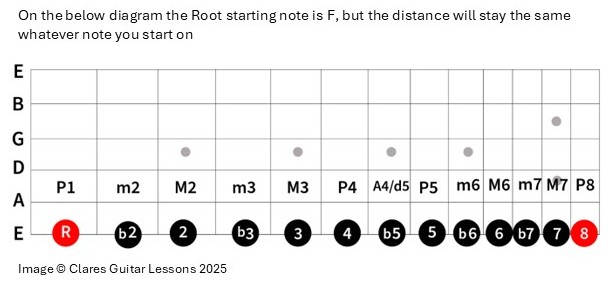Intervals: The Building Blocks of Music
Intervals on guitar are the foundation of scales, chords and melodies. Understanding intervals will help you see how music is built and unlock the fretboard in a more logical way.
An interval is the distance between two notes. On guitar intervals are measured in frets, with each fret equal to one semitone (or half step).
The Qualities of Intervals
Every interval has a quality which gives it its character and sound. On guitar intervals can be one of the following:
- Perfect – unison, 4th, 5th, octave (8ve = shorthand for octave)
- Major – 2nd, 3rd, 6th, 7th
- Minor – 2nd, 3rd, 6th, 7th
- Augmented – when a major or perfect interval is raised by one semitone
- Diminished – when a minor or perfect interval is lowered by one semitone
Why Learn Guitar Intervals?
Studying intervals is essential for guitarists because it helps you:
- Build scales (major, minor, pentatonic, etc.)
- Construct chords and understand their structure
- Create and recognise melodies by ear
- Improve your improvisation and songwriting skills
- Navigate the fretboard more confidently
The Chromatic Scale and Intervals
The chromatic scale contains all twelve notes in Western music, moving by semitones (one fret at a time). Within this scale, you can find every possible interval—from the smallest step (minor 2nd) to the widest (octave).

Intervals on the guitar


